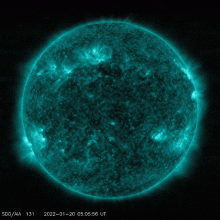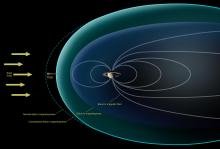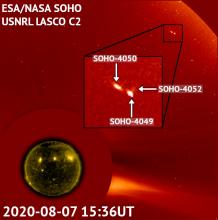Listen to today's episode of StarDate on the web the same day it airs in high-quality streaming audio without any extra ads or announcements. Choose a $8 one-month pass, or listen every day for a year for just $30.
You are here
Active Stars
The Sun sometimes produces big outbursts of energy and particles. When they hit Earth, they can disrupt our technology. Fortunately, though, the Sun is quiet compared to some other stars. They can produce outbursts that are far stronger than anything we’ve seen from the Sun.
The activity on all stars is powered by magnetic fields. The layers of a star rotate at different rates. That creates an electric dynamo, which generates a magnetic field. Over time, the lines of magnetic force get tangled up. Eventually, they snap, then reconnect. That creates explosions of energy and eruptions of particles.
Young stars are the most active. They spin faster than older stars, so their magnetic fields are stronger — and so are their outbursts.
One study, for example, looked at a thousand “active” stars that are no more than five million years old — compared to four and a half billion years for the Sun. On average, these stars produce a flare at least a hundred thousand times as powerful as the strongest ever seen from the Sun every week. And they produce one that’s at least 10 million times the Sun’s best a couple of times a year.
But older stars can still be pretty active. A study of almost 400 Sun-like stars found that most of them produce bigger outbursts than the Sun does. That suggests that, while the Sun is quiet now, it might not stay that way. It could simply be in a lull — with more fireworks in the future.
More tomorrow.
Script by Damond Benningfield





